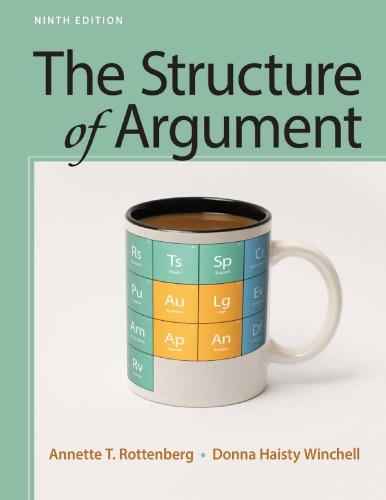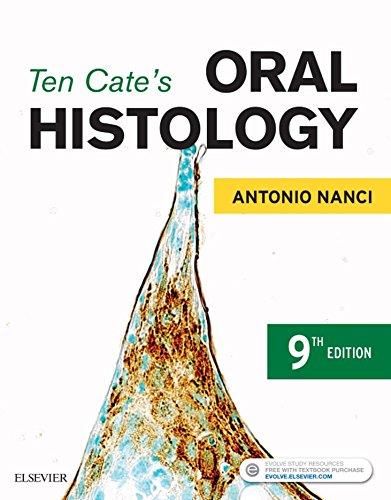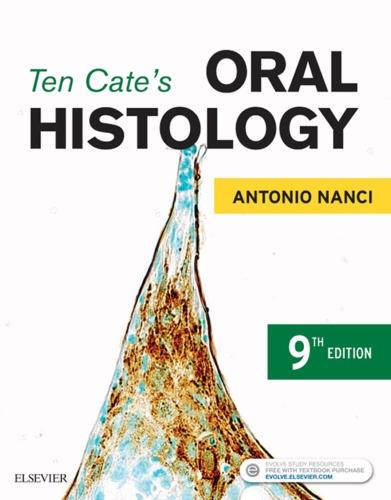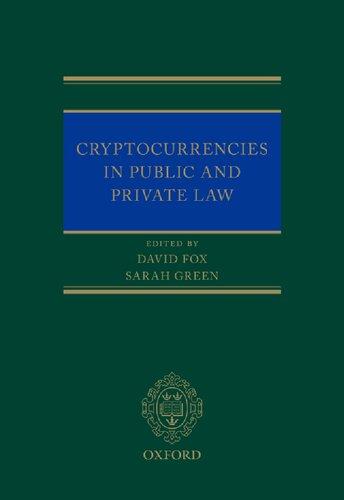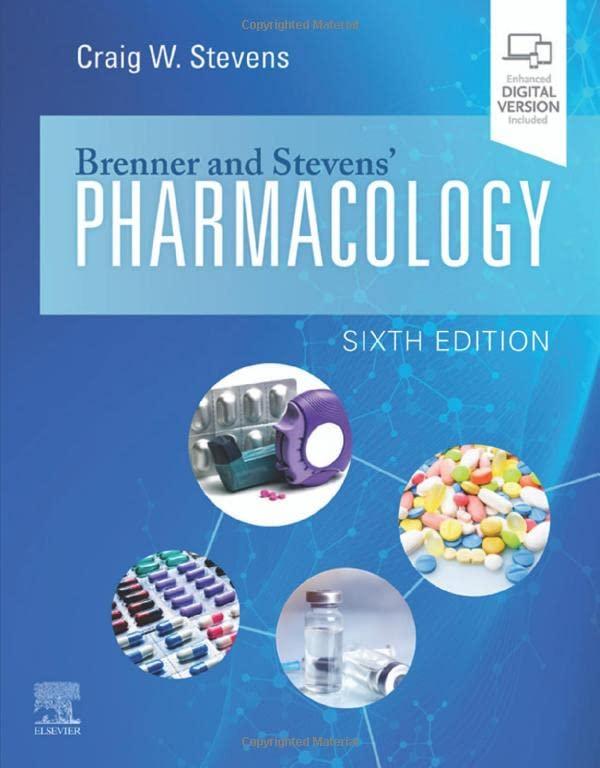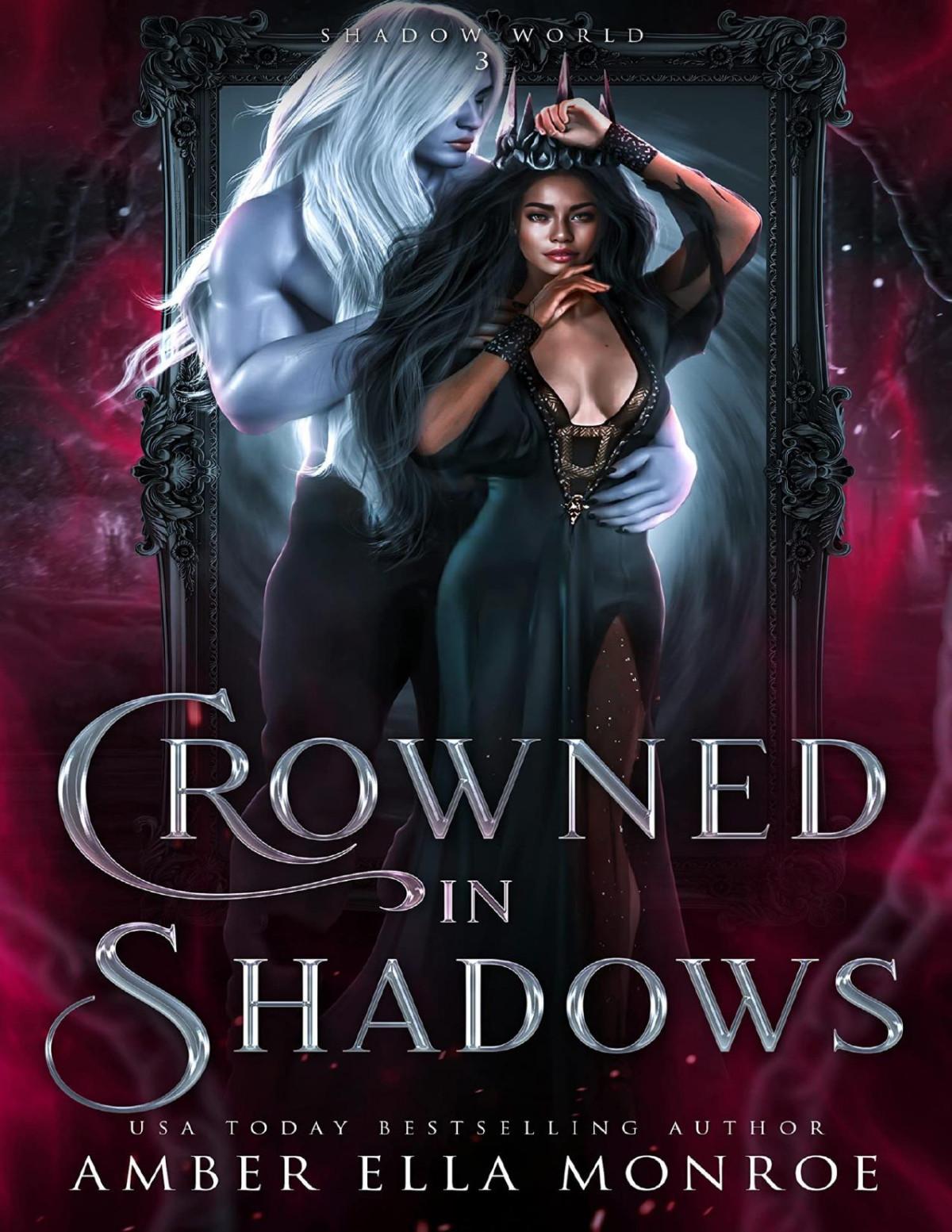Instant digital products (PDF, ePub, MOBI) ready for you
Download now and discover formats that fit your needs...
The Structure of Argument 9th Edition Annette T. Rottenberg
https://ebookmass.com/product/the-structure-of-argument-9th-editionannette-t-rottenberg/
ebookmass.com
Ten Cate’s Oral Histology: Development, Structure, and Function 9th Edition – Ebook PDF Version
https://ebookmass.com/product/ten-cates-oral-histology-developmentstructure-and-function-9th-edition-ebook-pdf-version/
ebookmass.com
Ten Cate’s Oral Histology: Development, Structure, and Function [TRUE PDF] 9th Edition Edition Antonio Nanci
https://ebookmass.com/product/ten-cates-oral-histology-developmentstructure-and-function-true-pdf-9th-edition-edition-antonio-nanci/
ebookmass.com
Cryptocurrencies in Public and Private Law David Fox (Editor)
https://ebookmass.com/product/cryptocurrencies-in-public-and-privatelaw-david-fox-editor/
ebookmass.com
A familial cluster of pneumonia associated with the 2019 novel coronavirus indicating person-to-person transmission: a study of a family cluster Jasper Fuk-Woo Chan
https://ebookmass.com/product/a-familial-cluster-of-pneumoniaassociated-with-the-2019-novel-coronavirus-indicating-person-toperson-transmission-a-study-of-a-family-cluster-jasper-fuk-woo-chan/ ebookmass.com
The Story of William & Catherine : The Prince & Princess of Wales Future Publishing Ltd
https://ebookmass.com/product/the-story-of-william-catherine-theprince-princess-of-wales-future-publishing-ltd/
ebookmass.com
Brenner and Stevens' Pharmacology 6th Edition Craig W. Stevens
https://ebookmass.com/product/brenner-and-stevens-pharmacology-6thedition-craig-w-stevens/
ebookmass.com
Crowned In Shadows: A Paranormal Why Choose Fantasy Romance (Shadow World Book 3) Amber Ella Monroe
https://ebookmass.com/product/crowned-in-shadows-a-paranormal-whychoose-fantasy-romance-shadow-world-book-3-amber-ella-monroe/
ebookmass.com
Equity and trusts 3rd edition. Edition Duddington
https://ebookmass.com/product/equity-and-trusts-3rd-edition-editionduddington/
ebookmass.com
Preface
Purpose
One look at today’s headlines is all it takes to see that every American citizen needs to be able to think critically about what is going on in the nation and in the world. Biased reporting slants the news, and it is hard even to discern what is fact. More than ever, people of conscience need to be able to take a stand and articulate a position.
College has long been a place where values and beliefs are tested. Exposure to new ideas and new perspectives is a part of coming of age. A course in argumentation is a place where students can learn the tools to critically examine the ideas they come in contact with. It is also a place where they can learn to construct their own arguments in defense of what they believe.
In order to get our students really thinking critically about argument, we have to get them to slow down and practice the art of critical reading and listening. We have to provide timely, accessible readings, we have to get them to analyze sustained argumentative discourse, and we have to give them a vocabulary to be able to talk about it. The vocabulary we use in this text incorporates Aristotle’s ancient rhetoric, the stasis theory questions, Carl Rogers’s notion of common ground, and Stephen Toulmin’s three principal elements of argument: claim, support, and assumption (warrant). In addition, we present the concepts of definition, language, and logic as critical tools for understanding and responding to arguments.
We also have to get our students to write sustained argumentative discourse. They have to learn to apply their knowledge of claim, support, and warrant. They have to learn to define key terms and to recognize, write, and support claims of fact, value, and policy, or, in the language of stasis theory, they have to be able to consider Questions of Fact, Questions of Definition, Questions of Quality, and Questions of Policy. They have to understand that successful arguments require a blend of logos, pathos, and ethos.
They have to appreciate the significance of audience as a practical matter. In the rhetorical or audience-centered approach to argument, to which we subscribe in this text, success is defined as acceptance of the claim by an audience. Arguers in the real world recognize intuitively that their primary
including ads, photographs, screen shots, and graphics provide visual examples and opportunities for analysis.
Part Four takes up the process of planning, writing, and documenting arguments based on independent research. Chapter 12 focuses on planning and research, including how to narrow a topic as well as how to find and evaluate sources. Chapter 13 addresses drafting and revising written arguments as well as oral presentations. Chapter 14 covers documentation and provides two sample research papers, one employing the Modern Language Association (MLA) documentation system and the other employing the American Psychological Association (APA) documentation style.
Part Five, “Debating the Issues,” includes a pair of readings related to each of five current debatable topics: student evaluation of faculty, genderneutral bathrooms, trigger warnings, princess culture, and paying college athletes. Each pair illustrates contrasting opinions on the same issue and is followed up with discussion questions and writing suggestions.
For instructors who want to apply current events to their argument course, see our blog, “Argument in the Headlines.” In our regularly updated posts, we use argument concepts to frame issues in the news, helping students relate the text and the course to their everyday lives. Students are encouraged to visit the blog at the end of each chapter. You can find the blog at blogs.bedfordstmartins.com/bits.
New to This Edition
In this edition, a new Chapter 5 focuses early in the text on how to write arguments, particularly in an academic context. This new chapter provides a clearer distinction between writing arguments generally and writing researched arguments, which is the focus of Chapters 12-14. It also makes it possible to make a clearer distinction between analyzing argument (Chapter 4) and writing argument (Chapter 5).
An introduction to stasis theory has been added to Chapter 1. This instruction is intended to help students further understand how logical questions can be used as a means of invention and to structure arguments effectively.
The concept of the warrant has always been a difficult one for students. In this edition we use the term assumption to make the concept more accessible.
As is the case with each edition of The Structure of Argument, we have updated readings throughout to keep information current and subjects interesting. In this ninth edition, over one-third of the readings are new. In the Debating the Issues section, new issues include the value of student evaluations of faculty, the pros and cons of gender-neutral bathrooms, and wisdom of providing trigger warnings in college classes.
is comprised of a pre-test check, multimedia instruction and assessment, and a post-test that assesses what students have learned about critical reading, writing process, using sources, grammar, style, and mechanics. Dedicated units also offer help for multilingual writers.
Diagnostics that help establish a baseline for instruction. Assign diagnostics to identify areas of strength and for improvement and to help students plan a course of study. Use visual reports to track performance by topic, class, and student as well as improvement over time.
A video introduction to many topics. Introductions offer an overview of the unit’s topic, and many include a brief, accessible video to illustrate the concepts at hand.
Twenty-five reading selections with comprehension quizzes. Assign a range of classic and contemporary essays each of which includes a label indicating Lexile level to help you scaffold instruction in critical reading.
Adaptive quizzing for targeted learning. Most units include Learning-Curve, game-like adaptive quizzing that focuses on the areas in which each student needs the most help.
Order ISBN 978-1-319-19264-8 to package LaunchPad Solo for Readers and Writers with The Structure of Argument at a significant discount. Students who rent or buy a used book can purchase access and instructors may request free access at macmillanlearning.com/readwrite.
Writer’s Help 2.0 is a powerful online writing resource that helps students find answers, whether they are searching for writing advice on their own or as part of an assignment.
Smart search. Built on research with more than 1,600 student writers, the smart search in Writer’s Help provides reliable results even when students use novice terms, such as flow and unstuck.
Trusted content from our best-selling handbooks. Choose Writer’s Help 2.0, Hacker Version, or Writer’s Help 2.0, Lunsford Version, and ensure that students have clear advice and examples for all of their writing questions.
Diagnostics that help establish a baseline for instruction. Assign diagnostics to identify areas of strength and areas for improvement and to help students plan a course of study. Use visual reports to track performance by topic, class, and student as well as improvement over time.
Adaptive exercises that engage students. Writer’s Help 2.0 includes LearningCurve, game-like online quizzing that adapts to what students already know and helps them focus on what they need to learn.
Student access is packaged with The Structure of Argument at a significant discount. Order ISBN 978-1-319-19261-7 for Writer’s Help 2.0, Hacker Version, or ISBN 978-1-319-19267-9 for Writer’s Help 2.0, Lunsford Version, to ensure your students have easy access to online writing support. Students who rent or buy a used book can purchase access and instructors may request free access at macmillanlearning.com/writershelp2.
Instructor Resources
You have a lot to do in your course. We want to make it easy for you to find the support you need and to get it quickly.
Resources for Teaching The Structure of Argument is available as a PDF that can be downloaded from macmillanlearning.com. Visit the instructor resources tab for The Structure of Argument. In addition to chapter overviews and teaching tips, the instructor’s manual includes sample syllabi, classroom activities, additional research assignments, discussion questions, teaching tips and ideas, and classroom activities.
Read a diverse range of texts, attending especially to relationships between assertion and evidence, to patterns of organization, to the interplay between verbal and nonverbal elements, and to how these features function for different audiences and situations.
Locate and evaluate (for credibility, sufficiency, accuracy, timeliness, bias and so on) primary and secondary research materials, including journal articles and essays, books, scholarly and professionally established and maintained databases or archives, and informal electronic networks and internet sources.
Use strategies such as interpretation, synthesis, response, critique, and design/redesign to compose texts that integrate the writer’s ideas with those from appropriate sources.
particular, Chapters 3 and 4 focus on critical reading of different kinds of arguments, and Part Four provides guidance on researching and crafting effective arguments using inquiry and critical thinking.
Throughout the text, diverse selections illustrate different rhetorical elements, and post-reading questions prompt students to analyze the relationship between assertion and evidence. Further, Chapter 3 shows students how to analyze the relationship between verbal and nonverbal elements of multimodal texts. Chapter 6 explores different kinds of claims, and Chapter 7 offers instruction on how to effectively support assertions.
Chapter 12 offers practical instruction for locating and evaluating primary and secondary research materials, and Chapter 13 illustrates best practices for reviewing research.
The questions and prompts that accompany each reading ask students to interpret, respond, and critique the writer’s choices, thereby engaging in academic conversation. Chapter 13 helps students compose texts that integrate the writer’s ideas with those from appropriate sources.
Processes
Develop a writing project through multiple drafts.
Develop flexible strategies for reading, drafting, reviewing, collaborating, revising, rewriting, rereading, and editing.
Use composing processes and tools as a means to discover and reconsider ideas.
Chapter 12 illustrates best practices for planning and research, and Chapters 13 and 14 take students through the process of drafting, revising, and presenting effective arguments.
Part Four offers strategies for reading, drafting, reviewing, revising, and rewriting arguments.
Experience the collaborative and social aspects of writing processes.
Throughout each chapter, the text emphasizes the importance of rereading and rewriting to discover and reconsider ideas. In particular, Chapter 2 provides strategies for evaluating arguments and ideas, and Chapter 13 reemphasizes evaluation as part of the writing process.
Writer’s Guides and Research Skills boxes throughout the text provide insights into the writing and research processes that can be used as prompts for discussion of the writing process.
Learn to give and to act on productive feedback to works in progress.
Post-reading questions, as well as the Writer’s Guides, Research Skills boxes, and end-of-chapter Assignments in Chapters 1 through 11, can be used as prompts for peer feedback.
Adapt composing processes for a variety of technologies and modalities.
Reflect on the development of composing practices and how those practices influence
Chapter 3 shows students how a variety of technologies and modalities can be used to build persuasive arguments.
Post-reading questions and end-of-chapter Assignments often encourage students to reflect on their knowledge, assumptions, and
19 Economics and College Sports: Should College Athletes Be Paid?
Glossary
Index of Subjects
Index of Authors and Titles
industrialized nations.
STEVEN REINBERG, Embryo Selection May Help Prevent Some Inherited Disorders
A journalist for a health newsletter explains how, with in vitro fertilization, it is now possible to screen embryos for certain diseases before they are implanted.
Assignments for Understanding Approaches to Argument
2 Critical Reading of Written Arguments
Prereading STRATEGIES FOR PREREADING
CAROL ROSE, On Pins and Needles Defending Artistic Expression
A lawyer and journalist defends tattoos as a form of artistic expression.
AMIN AHMAD, I Belong Here
An American of Indian descent feels a sense of solidarity with foreigners going through immigration screening at the airport.
Reading for Content and Structure
Working with the Text
STRATEGIES FOR ANNOTATING A TEXT
CHRISTOPHER ELLIOTT, A Tale of Two Airlines
A travel editor compares Spirit, a villain of an airline, and Southwest, a hero.
Summarizing
RESEARCH SKILL Summarizing
STRATEGIES FOR WRITING RHETORICAL SUMMARIES
MALLORY SIMON, Gun Debate: Where Is the Middle Ground?
An editor focuses on the son of a shooting victim as he pleads for some middle ground in the gun debate.
STEPHANIE FAIRYINGTON, The Gay Option
A freelance journalist argues that homosexual practice and identity are a choice but regrets that she could not admit her choice in the matter when she came out to her family.
Evaluation
STRATEGIES FOR EVALUATING ARGUMENTS
ARGUMENT ESSENTIALS Examining Written Arguments
BRUCE SCHNEIER, The Internet Is a Surveillance State
A security technologist warns that we have given up our privacy on the Internet without even a fight.
WHITNEY CRAMER, Giving Up Our Privacy: Is It Worth It? (student essay)
Assignments for Critical Reading of Written Arguments
3 Critical Reading of Multimodal Arguments
Visual Rhetoric Photographs
DAVE MARTIN, Looting (photograph)
CHRIS GRAYTHEN, Finding (photograph)
RICK LOOMIS, Los Angeles Airport Police Remove the
Assignments for Critical Reading of Multimodal Arguments
4 Writing Argument Analysis
ARGUMENT ESSENTIALS Argument Analysis
Writing the Claim
ARGUMENT ESSENTIALS Writing the Claim
Planning the Structure
ARGUMENT ESSENTIALS Planning the Structure
Providing Support Summarizing Paraphrasing Quoting
ARGUMENT ESSENTIALS Providing Support
RESEARCH SKILL Incorporating Quotations into Your Text
Documenting Your Sources
WRITER’S GUIDE Documenting Use of Summary, Paraphrase, and Quotation
MICHAEL ISIKOFF, The Snitch in Your Pocket
An investigative journalist argues that in spite of the help that tracking cell phones may be to law enforcement, we should still be concerned about the privacy we are sacrificing.
RAY CHONG, Misuse of Cell-Phone Tracking (student essay)
DERON WILLIAMSON, How Our Technology Is Used against Us (student essay)
HEALTHCARE MANAGEMENT, The Science Facts about
